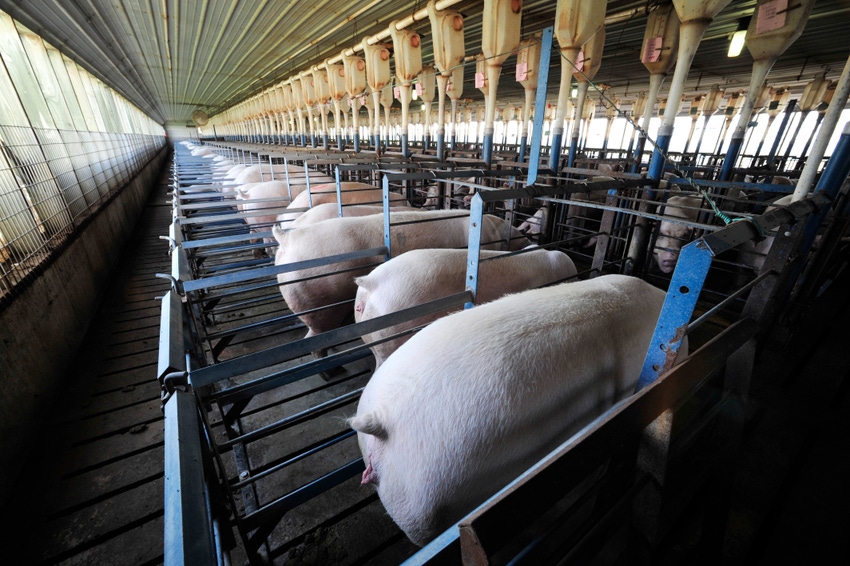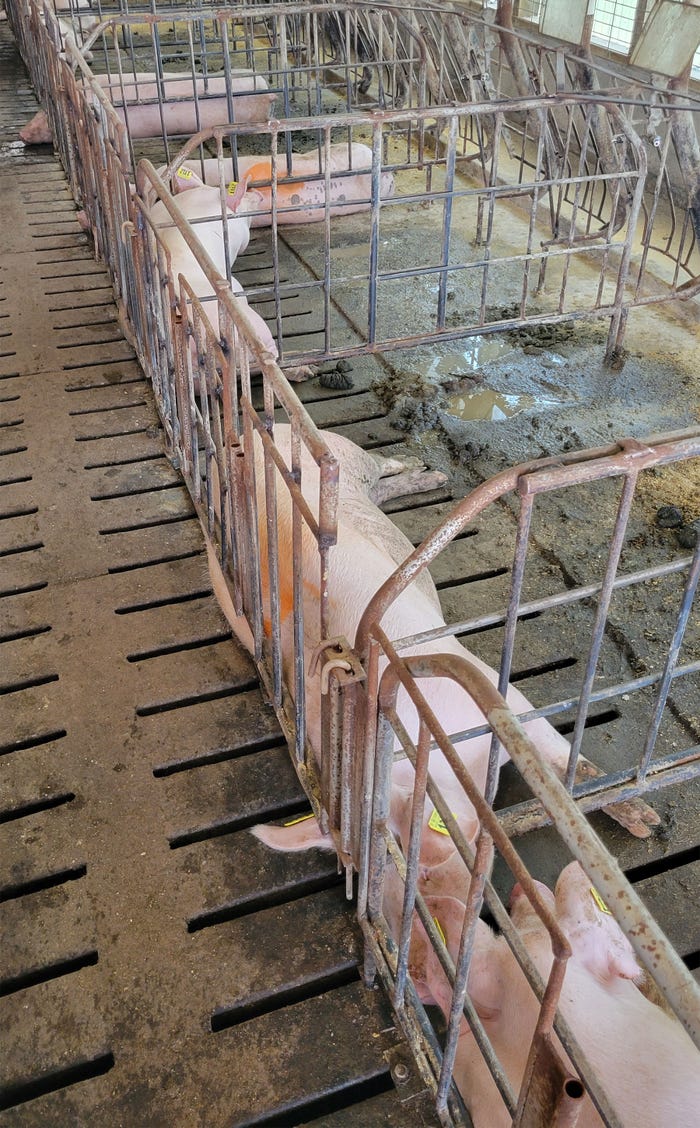Pennsylvania producers concerned over EATS Act
Animal ag leaders fear EATS Act would undermine progress on animal welfare issues.

The National Pork Producers Council and other ag groups have condemned California’s Proposition 12, describing it as an attempt by the nation’s most populated state to tell farmers in other states how to raise their animals.
But in Pennsylvania, where some producers have spent years getting ready for inevitably tougher animal welfare standards, the issue is not black and white. There’s a lot of grey.
“Being in Pennsylvania, we have 150 million sets of eyes who watch what we do. Lancaster is the largest animal ag county with 550,000 people. Our folks have been ahead of the curve as it relates to animal welfare issues,” says Chris Herr, executive vice president of PennAg Industries, who helped organize a recent listening session on the Ending Agricultural Trade Suppression (EATS) Act.
The EATS Act would bar states from passing laws that affect agricultural production in other states and was proposed shortly after the Supreme Court upheld California’s Prop 12, which establishes more stringent animal housing requirements for meat sold in the state and bans the sale of meat from animals not raised in compliance with the state’s living space requirements, regardless of location.
It's gotten support from Rep. Glenn “GT” Thompson, R-Pa., chairman of the House Ag Committee, who said as recently as last month in State College that he would consider inserting language in the farm bill should the EATS Act fail in the House and Senate.
But it’s also gotten push back from more than 170 lawmakers and some of Pennsylvania’s leading animal ag leaders, who are concerned the passage of the act would undermine markets that have opened for producers willing to make changes.
Industry speaks out
Brad Clemens, president of Clemens Food Group, which produces pork products under the Hatfield Quality Meats label and other private labels, says the EATS Act would undermine years of work the company has put in to prepare for Prop 12 and other similar animal welfare laws.
“We’ve given our producers choice,” he says. “This is their choice to be able to make this conversion, and a lot of them have. It’s given them choice, and it will absolutely take away a choice they have if the EATS Act were to pass.”
Clemens says the company, which ranks fifth in the nation in fresh pork processing and is in the top 10 for number of sows, has already transitioned all its sows and market hogs — raised through the company’s Country View Family Farms subsidiary and through independent producers — to the so-called “Ohio standard,” which mandates all pigs live in an environment that allows them to lie down fully on their side without having to lie on each other, and be able to easily stand up at all stages of production.
The Ohio standard allows gestation crates but only at post-weaning to maximize embryonic welfare and to allow for confirmation of pregnancy.
It took about 10 years to switch all the company’s animals to this system, Clemens says. Less than half of the company’s animals are being raised to follow Prop 12 and its Massachusetts equivalent, he says, a process that took only two years to implement.
Prop 12 specifies living space requirements per animal — 24 square feet for pigs, 144 square inches for egg-laying hens and 43 square feet for veal calves. As a result, commonly used gestation crates for sows and battery cages for hens don’t meet the Prop 12 standard.

SOW CONDOS: Hershey says that two years ago, he did an experiment by eliminating gestation crates and replacing them with sow condos. He did this by cutting three crates and combining everything into one single pen, or cutting four crates into one single pen. The transition has been both positive and negative, but he doesn’t regret making the change.
Prop 12, Clemens says, has opened a market that the company is eager to fill. He estimates that more than 1 million pounds of pork from his company are shipped to California and Massachusetts each week, and it is sold for a premium.
“It is a win-win situation for us and producers,” he says. “We’re a values-driven company. This is a decision that has fit with our core values for a very long time, The people have voted for what they want. Leave the federal government out of it. The market has spoken."
Brent Hershey, owner of Hershey Ag in Marietta, Pa., raises 3,200 sows and 80,000 market hogs per year. His company has sow units in Pennsylvania and Delaware.
His animals were transitioned to the Ohio standard starting in 2012. Half the time, the sows are in open pens, half the time in crates. After the sows get pregnant, they are moved into an open pen with seven to 10 sows, and then moved into a farrowing room.
Hershey says that two years ago, he did an experiment by eliminating gestation crates and replacing them with sow condos. He did this by cutting three crates and combining everything into one single pen, or cutting four crates into one single pen.
The transition has been both positive and negative. The number of finishing market hogs dropped significantly, he says, and the sow herd had to be moved off-site. As a result, new gestation barns are now having to be built. He estimates it costs about $700 per sow for the improvements.
For anyone hoping to transition to larger pens, Hershey says they should expect a reduction in herd size of about 35%, if they are just retrofitting an existing barn, and extra costs with having to build new barns.
But he has also seen many positives. Sows going to farrowing, Hershey says, walk better and don’t lose their footing. He has also noticed sows have better stamina when having litters, which he attributes to their increased mobility.
Also, shoulder sores have largely disappeared, and the number of sows having to be culled has decreased significantly.
Hershey says the transition was the right thing to do and is a system that he can defend to himself and to others.
“We saw the writing on the wall,” he says. “We couldn’t defend this. We wanted to move it to the new system. Our plan to move to it was a permanent move. Once we made the change, we can’t go back.”
Mark Sauder, CEO of Sauder Eggs in Lititz, Pa., markets eggs from 6.5 million birds. He says that his company and farm partners have already invested millions of dollars to convert a good portion of the production to cage-free, and they have worked with end customers to get the facilities upgraded to standard.
"For me, it creates significant market turmoil," he says. “For it to be changed again, after we made the commitments, is not beneficial.”
Sauder says he bought a 1-million-bird layer complex that was all caged and retrofitted half of it for cage-free, a process that took several years and $15 million.
For the group of farmers that raise the company’s layer hens, he estimates the cost to retrofit to cage free at between $75 million and $100 million.
About 50% of the birds Sauders markets eggs from are cage-free.
"We have significant capital invested in this process. In my view, the battle has already been fought. … Now we are trying to revisit it,” he says. “My goal is to provide a product that is wanted in the marketplace.”
About the Author(s)
You May Also Like





